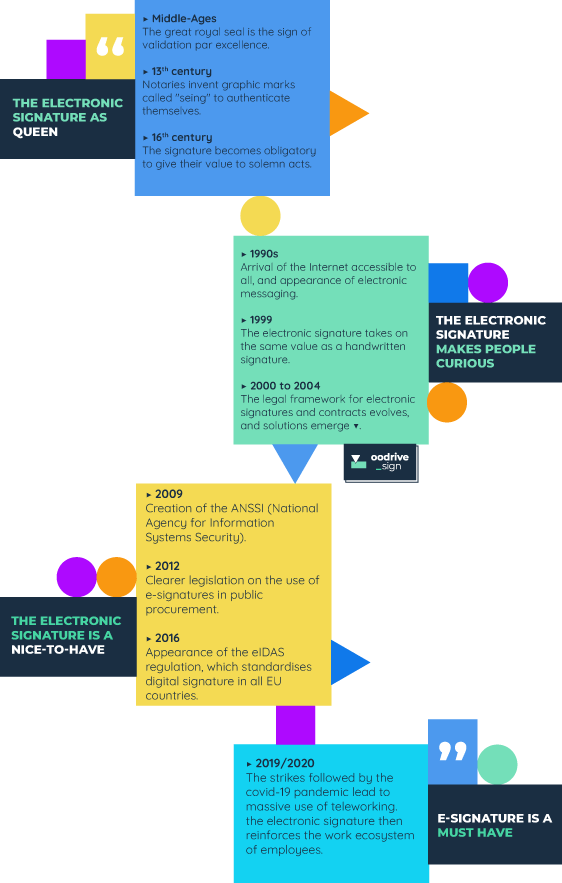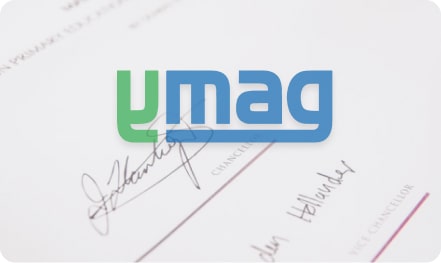Definition : The electronic signature is a mechanism for guaranteeing the integrity of a digital document and authenticating its author, by analogy with the handwritten signature on a paper document.
The signature has taken on its meaning since the need for document authentication, and its form has evolved. Initially seen as a simple sign of validation in medieval times, then adopted by all writing professionals, the signature is now indispensable.
Then digitally deployed, the electronic signature more recently raises questions of legal value and framework. And in a context where the digital transformation processes of companies are largely underway, the electronic signature is making its mark. Qualifications and certifications such as the compliance with the eIDAS regulation are part of the essential criteria to evaluate when choosing your electronic signature solution.
Moreover, tools such as oodrive_sign exist, and place trust at the heart of their functions, without losing sight of the simplicity and efficiency that are the very essence of the signature principle.
But it wasn’t always this simple! Discover the history of the electronic signature.

As you will have understood, the electronic signature is now a must-have for companies that have embarked on their digital transformation. It is an essential component in the life cycle of a document.
Moreover, a document goes through many stages from its creation to its expiry. This includes signing it, but also modifying it, organising it, sharing it, publishing it and even saving it. And what if all these major functionalities were grouped together in a common base, allowing the management of all its contents ?
Oodrive_sign, our electronic signature solution, is integrated into the Oodrive platform. A trusted working environment, where serenity reigns, and allows strategic projects to be carried out. Freed from security issues, you can finally refocus on your core business.








